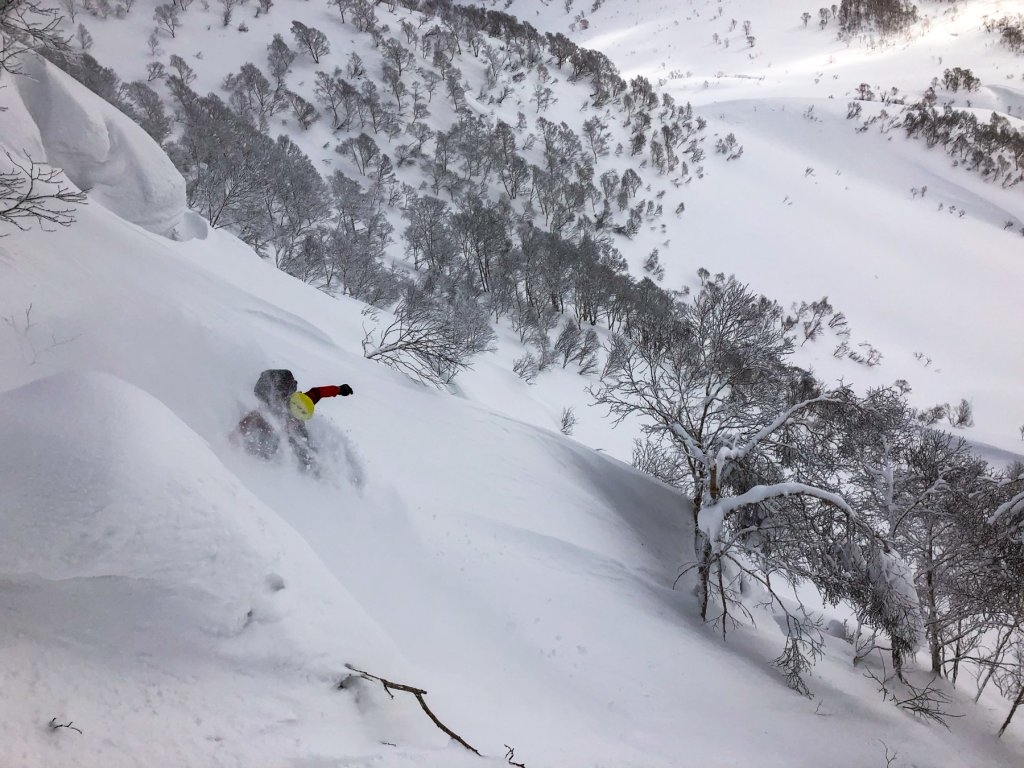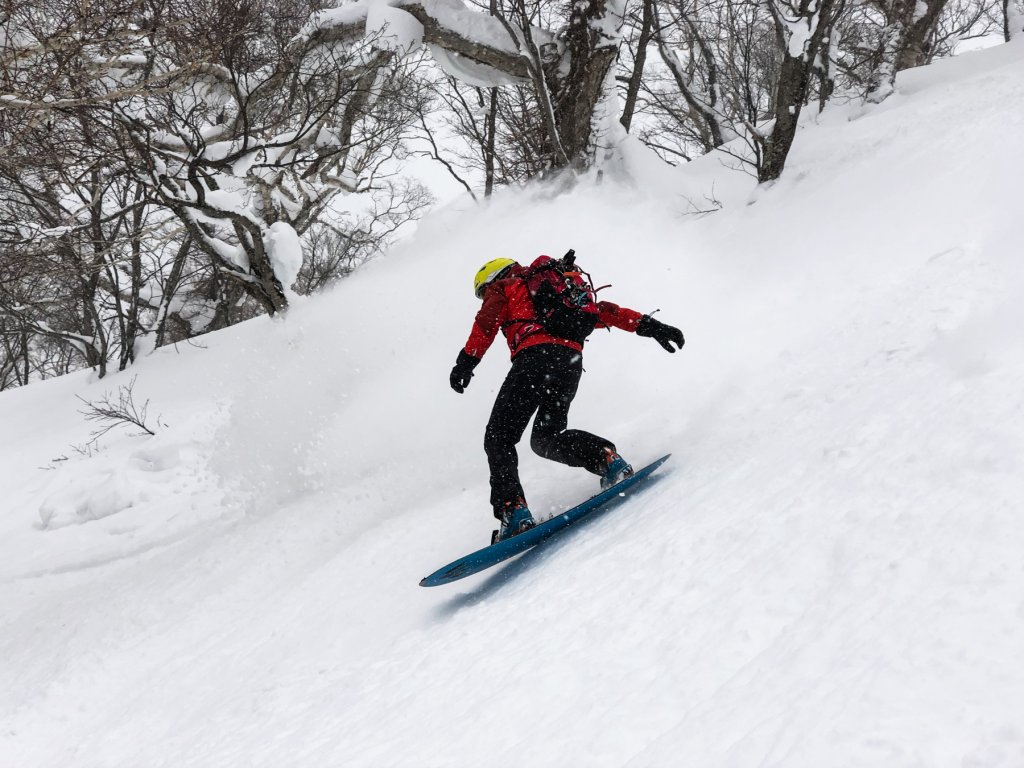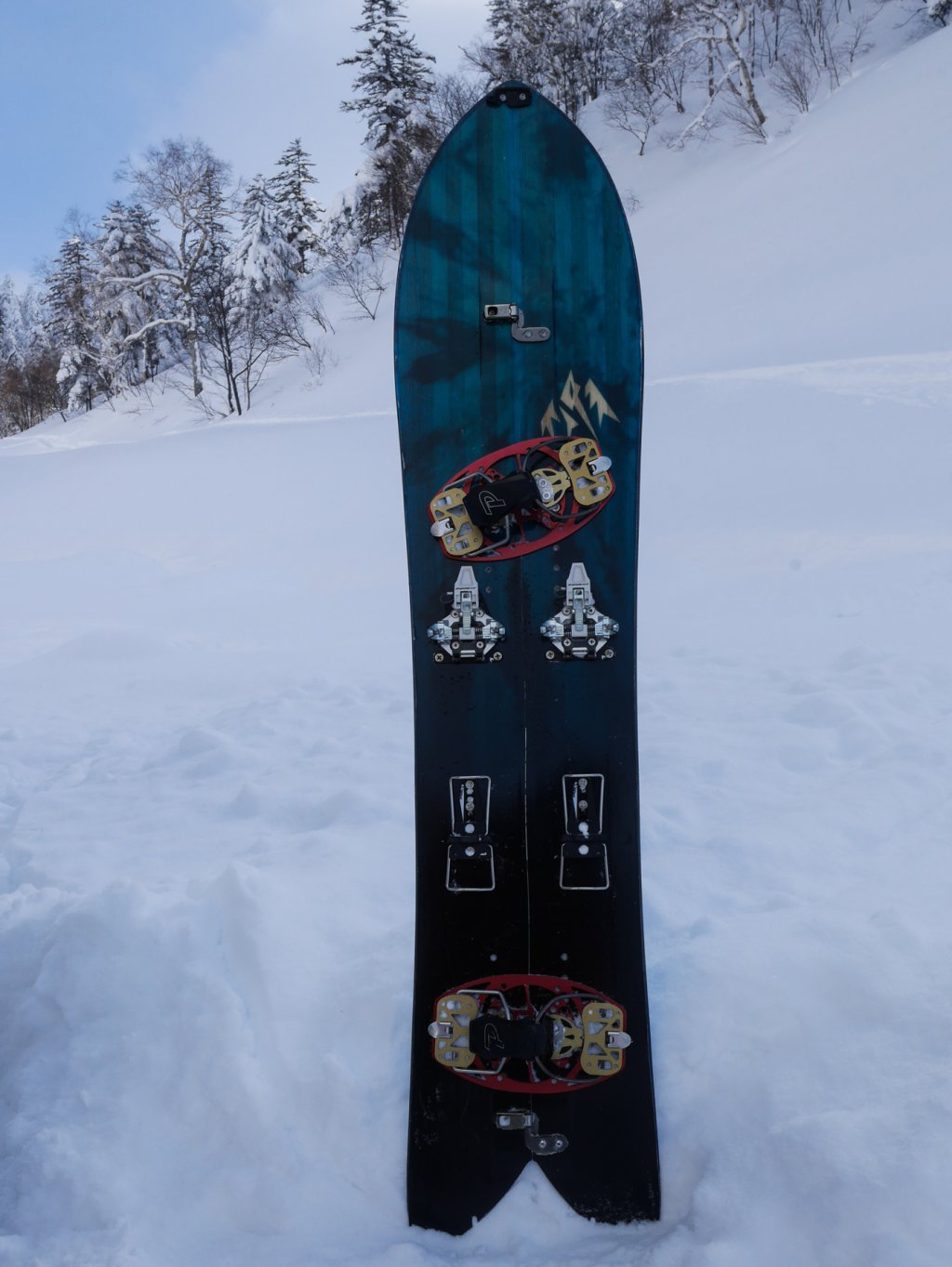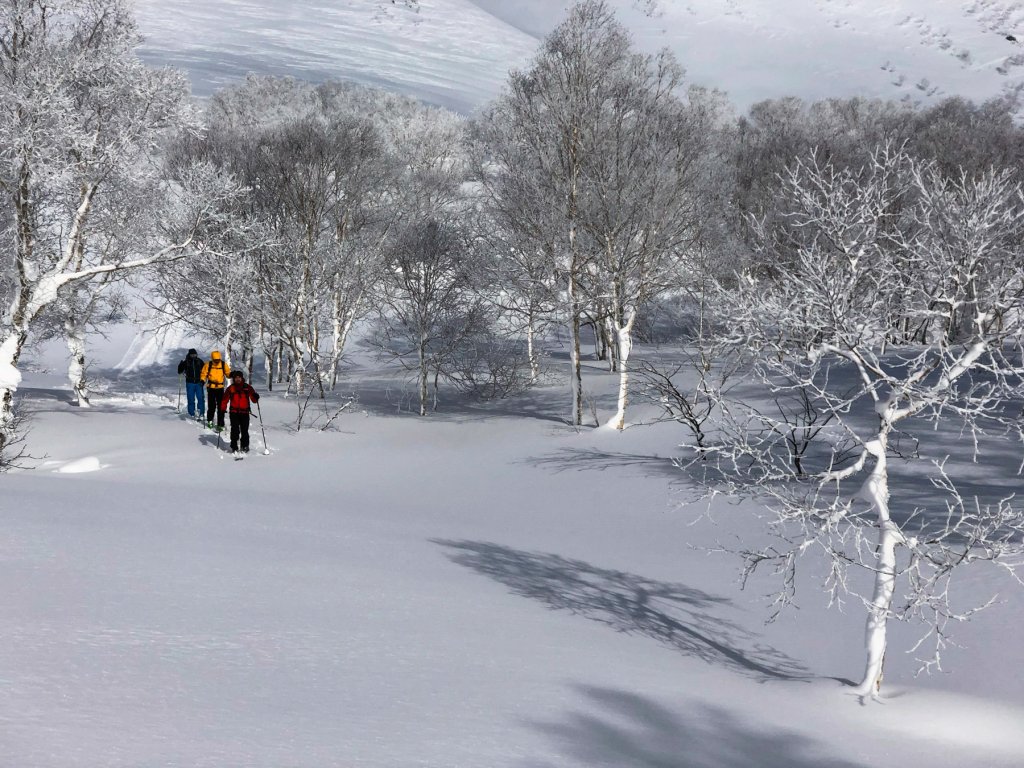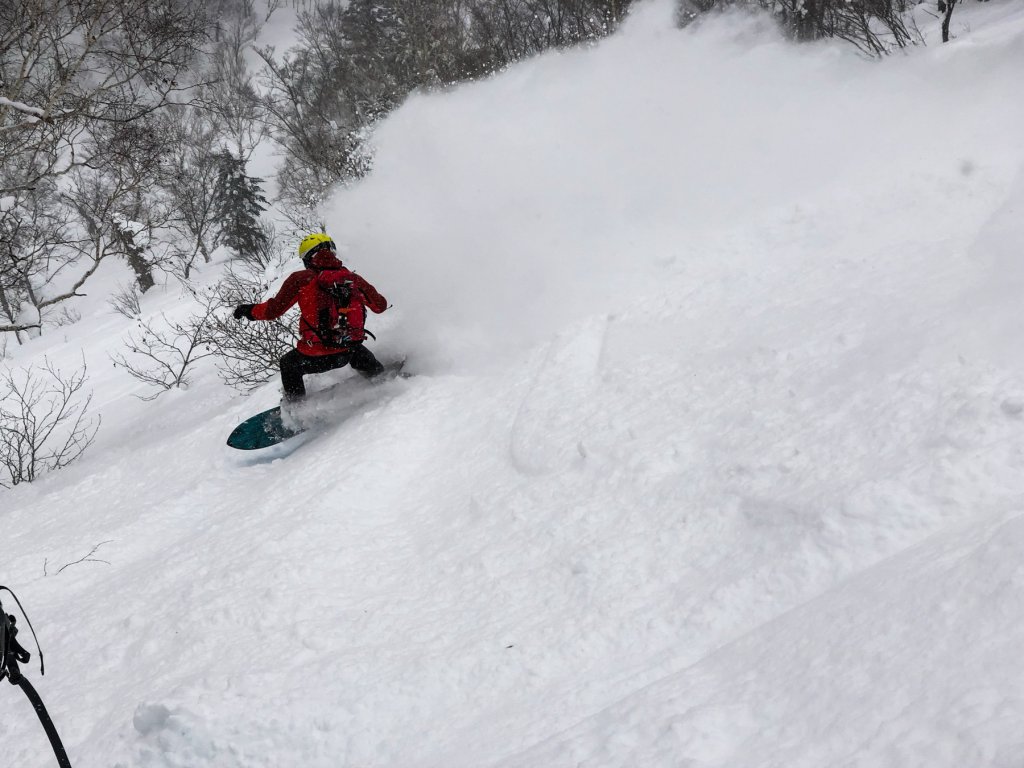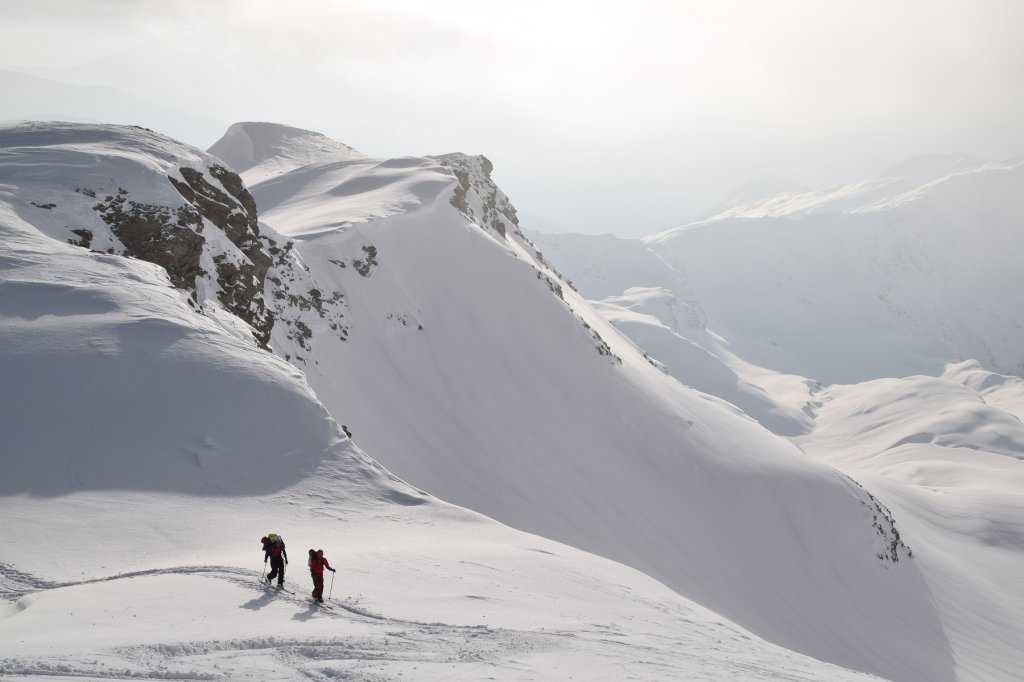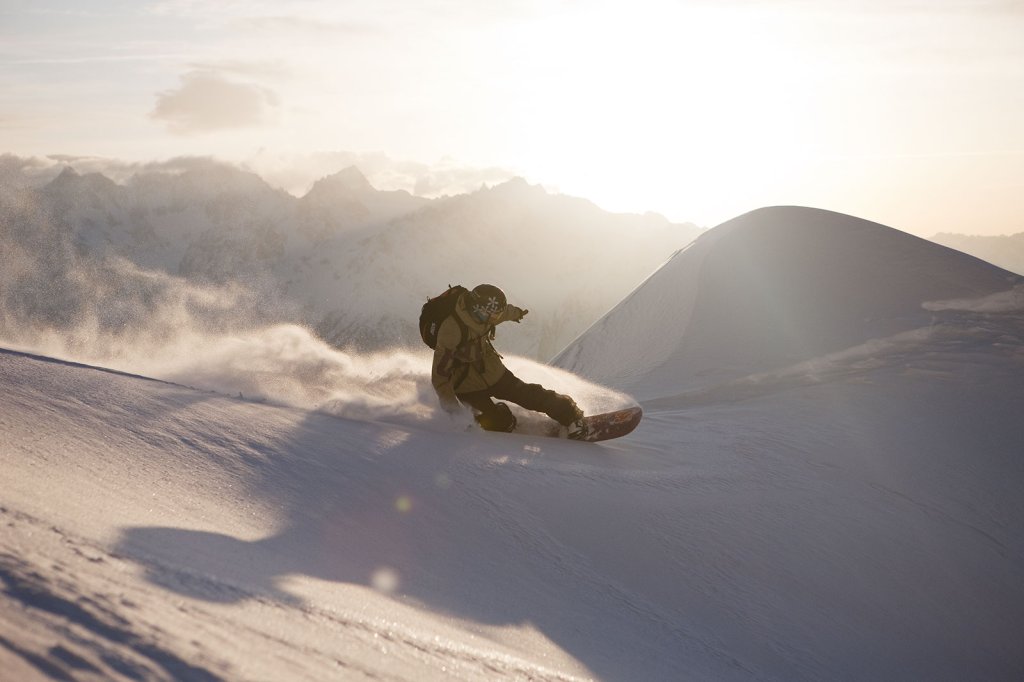Test conditions
I started snowboarding in 1998 and have been snowboarding on tour for about 10 years. I am 180 cm tall and weigh 75 kg without equipment. My previous splitboards were a Burton Freebird, a Jones Hovercraft and an Amplid Lab Carbon Split, which serve as a comparison for this review. As a setup I use a Phantom Alpha binding with a modified Atomic Backland as a boot, a very solid and good riding hardboot setup. I tested the Jones Stormchaser for three weeks in Hokkaido (Japan). Apart from one day at the resort, we were always on tour. The snow conditions for this test were therefore quite good, little to very deep powder, occasionally also wind harsh on blown-off peaks. The board was provided by Jones for this test, I organized the matching Jones climbing skins (manufacturer Pomoca) myself.
Uphill
The first thing you notice is how short the board is with its length of 147cm. This is an advantage in tight hairpin bends, but my fellow skiers jokingly complained when they walked behind me: My track almost looked like that of a snowshoe walker, as you have quite a small contact surface and therefore sink in deeper. The board can be edged relatively well despite its width, but this is generally made much easier by a hard boot setup. The width under the binding and the rocker of the Stormchaser bring the known disadvantages on hard snow. I didn't have any crampons with me for this board.
On every tour, I noticed that the nose was not bent up enough. This makes walking a lot more difficult, especially in heavier powder and windy terrain, where you can get stuck with the tip if you don't lift your foot. All in all, you can go on tour with the board, but you can tell that it wasn't built for it.
